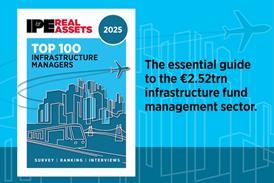The corporate property industry is keen to tackle the issue of sustainability but has been hindered by fragmentation and lack of coherence. The launch of IPD's new Environment Code in February represents a significant step forward. Ian Jeffries reports
As Kermit the Frog famously said: "It's not easy being green". And as expectations increase on all of us to take environmental concerns more seriously, I suspect that many will share this sentiment.
Yet with Energy Performance Certificates now a requirement for many commercial buildings and the Climate Change Bill due to hit the statute books in the UK in the summer - enshrining in law the duty to reduce CO2 emissions by 60% by 2050 - one thing is clear: we will need to become a lot greener yet!
It's close to a racing certainty that firms will increasingly find themselves under pressure to be more accountable for their environmental conduct. And, like it or not, the real estate industry is a lead protagonist in this.
For example, did you know that 50% of the average business's carbon emissions come from the property they occupy? As a result, the real estate industry is responsible for some 20% of all UK emissions. Not to forget that it is also responsible for consuming huge volumes of fresh water and for generating vast quantities of waste - both increasingly important environmental concerns.
Clearly, if you haven't yet considered your estate's environmental impacts, now would be a very good time to start! But for many of us this raises the question: where exactly do I begin? After all, the environmental agenda is a brave, complex new world.
Fortunately, help is at hand. The corporate property industry now has its own environmental measurement standard - the IPD Environment Code. A free-to-download resource, the code sets a standardised template for the collection, measurement and analysis of environmental information. It is the ideal starting point for property and facilities executives looking to get to grips with environmental matters.
The code has good pedigree. Produced by data house IPD, it has strong support from top global firms such as Barclays, BP, CB Richard Ellis and Bureau Veritas as well as endorsement from leading representative organisations the CBI, RICS, CoreNet, BIFM and BRE - all keen to support industry good practice and to raise the profile of environmental issues.
The benefits of using the code should not be undersold. Access to high quality information is invaluable for executives keen to make sound commercial decisions, both quickly and confidently - the code supports this. It also provides a ready-made platform for executives to report and communicate performance (and hopefully performance improvements) to a growing list of stakeholders, from the board chairman to NGOs.
Moreover, the property department will be well equipped to support wider organisational objectives. Not only by helping to ensure that it does its bit to meet the increasing range of environmental obligations and regulations, but also through the adoption of recognised industry good practice.
Another benefit is improved risk management, since, with a clear picture of the environmental risks associated with their buildings - for example, whether it is a gas guzzler or poorly served by public transport - managers can work towards mitigating these risks: something corporate boards will be increasingly keen to do.
And with a level of environmental performance in mind, managers will be able to set better, more detailed environmental specifications for the range of procurement associated with new buildings or retrofitting of existing ones.
This is, of course, not to forget that the code will also enable organisations to make apple-for-apple comparisons of building performance within their estate, as well as to benchmark this performance against other organisations using the code, for many, one of the most powerful statements of a firm's environmental credentials.
And this is what really sets the Environment Code apart from other environmental initiatives. By focusing on the collection of base data for inputs like energy, water and waste, it provides a truly global solution.
A major problem, especially for large global firms, is the plethora of nationally set standards and regulations out there. For example, in the US there is the LEED standard, in the UK there is BREEAM, in France there is HQE. The list continues, but all are different. By the same token, the 193 recognised state governments produce 193 differing sets of rules and regulations - and that's not to mention the sub-layers of regional and local government. Suffice it to say, there's a lot to think about!
And this is why the Environment Code can be so valuable. With global applicability, the data that it collects can be sliced, diced and rejigged to conform with national preferences as required.
This is very much the vision for the code. Not only as a tool to help reduce organisations' environmental impacts, but to help reconcile national idiosyncrasies and to help encourage global solutions to a global problem. No small task, but no one said it would be easy being green.
Ian Jeffries is head of occupier environmental services at IPD and author of the IPD Environment Code












